Clear Flat bag is made from Food Grade Virgin material. environmentally friendly and hygienic. They are water-proof, Moisture-proof, strong toughness, tear resistance, good for storage and usually for packing sugar, biscuits, candy, coffee bin, fruits , drinks or other foods. Normally width from 3 inch to 12 inch. Length from 7 inch to 22 inch. Material could be in HDPE or LDPE.
Clear Flat Bags, Polyethylene Flat Bags, Clear Flat Polyethylene Bag, Side Seal Bag, Clear Bag, Crystal Clear Side Gussets Bags BILLION PLASTIC MANUFACTURING CO.,LTD, JIANGMEN , https://www.jmtrashbag.com
Compressor Evaluation Test Machine (CETM), this machine can test all auto air condition compressor in the market.
100% Made In USA.
One compressor one minute test.
20 days production time.
Shipped directly from Dexas, USA.
Shanghai Trisun is the Exclusively Authorized Dealer for this TDS CETM.
If you're interested in it, please contact me  .  I will send you more detail information.
Installation of auto compressor and contral volve to the machine:Â 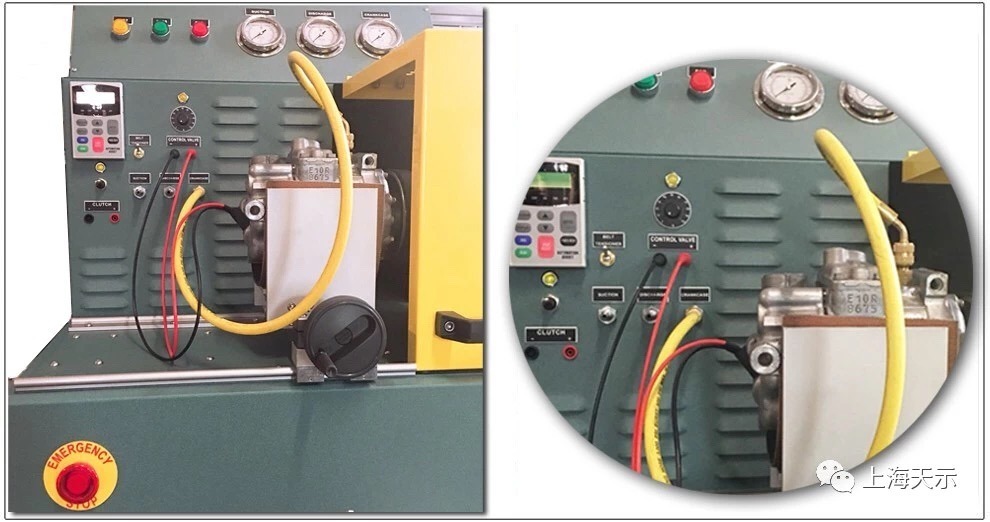
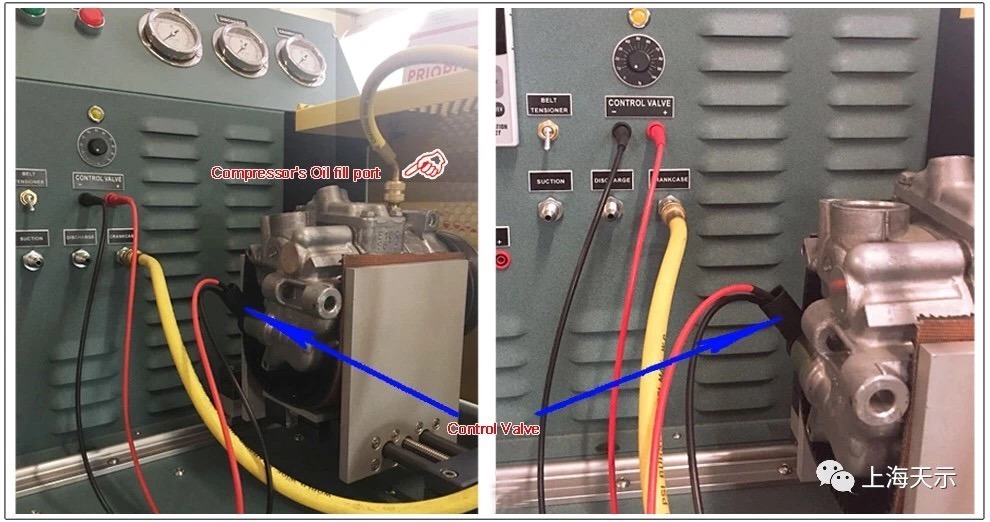
Backside of the machine:
1.  Flow Control Adjustment
      - 12 / 24 VDC
      - Nitrogen / Air Supply In
      - Dump
2. Computer Interface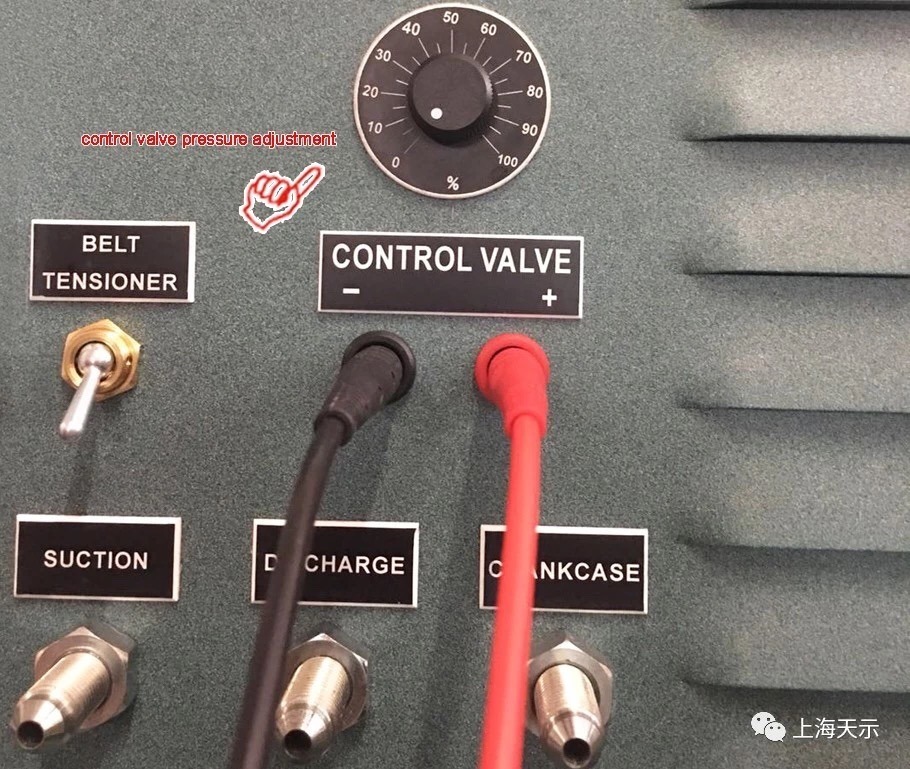
Automatic Ttight the Pulley Belt by Click One Button: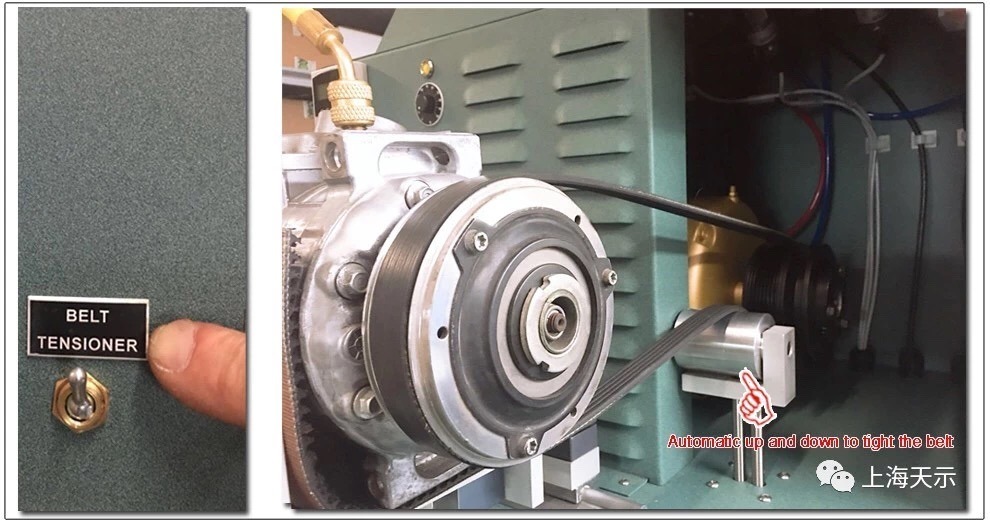
Reading and record the pressures change inside of compressor:
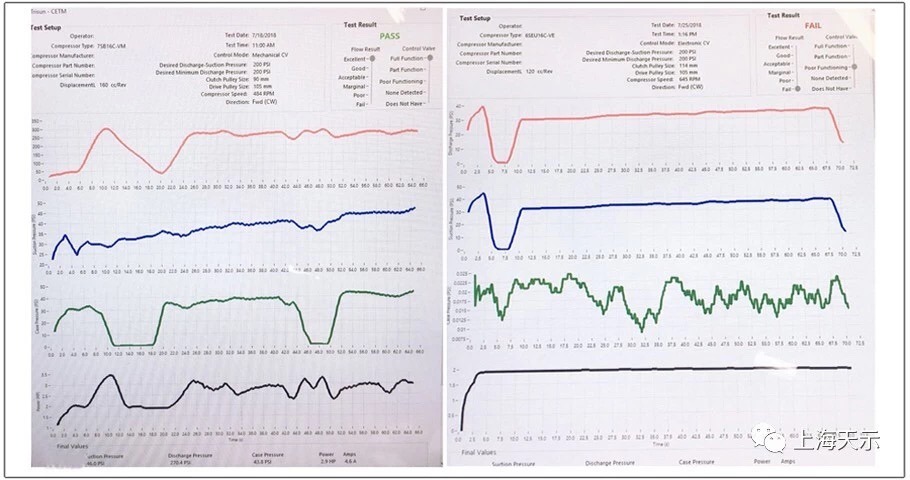
IntroductionÂ
The A/C Compressor Evaluation Test Machine (CETM) is designed to evaluate compressors without the operator needing to be familiar with the design and functionality of compressors. 2017 updated CETM machine has been manufactured for compressor manufacturers and remanufacturers with more automation and capability. The test imitates the loads that would be put on a compressor in an actual vehicle air conditioning system.Â
The CETM requires a computer loaded with the TDS Compressor Evaluation Software (TCES).Â
A list of compressor models is included in the software for convenience, but it is possible to test any compressor with a given pulley diameter and displacement per revolution. It is not necessary to know if the compressor is a ï¬xed or variable model…the machine can determine the difference and run the correct test for either type.Â
Quick StartÂ
The CETM is easy to use. Mount the compressor on the universal bracket. Align the bracket with the pulley and ensure the belt is straight. The compressor should be oiled and any excess oil drained from the compressor. Ensure that the hoses are properly connected. It is not required to have a measurement of the crank case pressure but it is beneï¬cial for diagnostics.Â
Start the program and ensure the machine is communicating with the computer. This is conï¬rmed by the status color on the DL405 PLC Communications panel changing from red to green.Â
The software consists of three (3) screens:Â
Variable Animation Screen -This screen gives a look into the interior of a generic variable displacement compressor. When the compressor animation ontheleft is active it signiï¬es the compressor is running at minimum displacement. The compressor animation on the right is active when the compressor is running at full displacement. The input values at the bottom of the screen show the pressure inputs in real time.Â
Setup Screen The calibration of the inputs is shown on this screen. These are factory set for each machine and should not be changed. The test time is also set at the factory. The drive motor on the CETM can run forward or backward. Most compressors will run forward.Â
The easiest way to run a test is to use the drop down list of compressor types listed in the "Select Compressor Type" ï¬eld to select a compressor model that best represents the compressor being tested. Select the model type from the list and click on the "OK" button. Â
Â
It is possible to create your own list that will automatically populate the report page or printout. Use the text ï¬le supplied by TDS and modify it to create your own text ï¬le. This ï¬le is named TheList.txt and is located in the C:/TDS/ directory.Â
Open this list in a text editor such as Notepad and you will be able add or remove compressor models. Make sure to keep the same format and the last line of the ï¬le MUST be "None,0,0,0,0".Â
Below is a sample of the required format:Â
10PA20,2000,MyPartNumber,10PA20HX234,DensoÂ
First,150,Part1,Model1,Mfg1Â
Two,160,Part2,Model2,Mfg2Â
Three,1700,Part3,Model3,Mfg3Â
None,0,0,0,0Â
As an example the ï¬rst line could be a 10PA20 compressor. The line would read:Â
10PA20,2000,MyPartNumber,10PA20HX234,DensoÂ
Note: The displacement per revolution is multipliedby10 if it is a ï¬xed displacement compressor !
When the Custom List is loaded the list supplied with the machine will be temporarily unavailable until the program is stopped and restarted. The Custom List is added by clicking on the
Performance Report Screen -After selecting the compressor type you must go to the Performance Report screen to enter the compressor clutch diameter. This measurement is in millimeters.Â
Once this is done you need to ensure the compressor is properly aligned. This is accomplished by moving the universal test bracket.Â
Press the start button.Â
Once the test is complete press the print button on the Setup screen. This will print the test report and save the data to disk.Â
Theory of OperationÂ
A car air conditioning compressor is essentially a pump designed to move a gas through a closed system. There are many types of compressors and they come in many sizes. For the CETM to test many types of compressors the system has to be programmable so that the test dynamics for all models produce similar results within a speciï¬ed range. This is accomplished by entering the displacement per revolution and the pulley diameter in the ï¬elds at the bottom of the Performance Report screen. Using the data from these ï¬elds a calculation is performed and the drive motor speed is changed to compensate for the size of the compressor.Â
As noted earlier, the test imitates the loads that would be put on a compressor in an actual vehicle air conditioning system. When the test is started current is sent to an air pressure transducer that adjusts the suction pressure to approximately 3 bar. This is well above the pressure which would result in a freezing evaporator and is also high enough to simulate a medium to high heat load on an evaporator. If the compressor is a variable displacement compressor the internal mechanical control valve should have been set at the factory to result in a crankcase pressure equal to the suction pressure.Â
The suction pressure is then adjusted down to a pressure that represents a low heat load or a freezing evaporator temperature. If the compressor is a variable compressor the discharge pressure should drop all the way down to unload the compressor. The suction pressure is then increased back to the high load condition. The discharge pressure should go up again. If it is a ï¬xed displacement compressor the discharge pressure will drop proportionally to the suction pressure.Â
The discharge pressure is increased by putting a restriction in the discharge line. For this test the restriction is an adjustable oriï¬ce inside a metering valve. The pressure drop across an oriï¬ce is directly proportional to the mass flow rate. Therefore, when the compressor drops to minimum displacement the mass flow rate drops. When the machine is shipped the metering valve is set to ï¬x the oriï¬ce size. This is done to set the maximum discharge pressure desired. All compressors should reach approximately the same maximum pressure at their maximum output. This maximum pressure can be adjusted with the metering valve. It is recommended that no changes be made to this valve.Â
Note: If you adjust this valve it may be necessary to adjust the "Peak" setting located at the bottom right corner of the Performance Report screen.Â
The "Peak" setting is the maximum pressure differential a good base line compressor will achieve. If this is set too low poorly performing compressor will pass, and if it is set too high good compressors will fail. This setting is extremely important and great care should be taken before it is adjusted.Â
The CETM has a frequency inverter to adjust the speed of the drive motor. This inverter also sends information to the computer on the amount of power being used during the test. Excessive power can result in poor durability of the drive motor.Â
DataÂ
The CETM has two methods for reviewing the results of the test.
1. The ï¬rst method is the review of the indicators for "Flow Result" and "Control Valve" located on the "Performance Report screen. These give an estimate for the operator who is not familiar with how a compressor should perform.Â
The "Flow Result" shows an evaluation of the flow performance of the compressor. This is determined by pressure thresholds. As mentioned previously the mass flow rate is proportional to the pressure drop across an oriï¬ce. If the higher discharge pressures are not obtained the flow will not be optimized. The settings showing a drop in compressor performance are representative of 10% drops in the pressure generated by the compressor. "Good" will be 10% lower than "Excellent", "Acceptable" will be 20% lower than "Excellent", and so on. It does not necessarily translate to the temperature of the air entering the passenger compartment of the vehicle. It is instead representative of the compressors performance. A pressure drop of 10% may only reflect a small amount of temperature change of the air that the passengers may not notice.Â
The "Control Valve" evaluation isa little more complex and is broken down as follows:Â
Full Function - This is when the compressor drops to a relatively low suction pressure as the compressor drops to minimum displacement.Â
Part Function - The evaluation will give this reading when the discharge pressure falls lower but not to minimum. It means the compressor will lower the displacement amount but not completely. This can result in the load on the engine not reducing when the maximum discharge pressure of the compressor is not needed. Although the drivability of the car may not be affected this does violate the design intent of the variable compressor.Â
Poor Function - This can only happen if the crankcase pressure detects that the internal mechanical control valve is working but could not detect an acceptable drop in the compressor performance. It means that there may not be enough flow through the control valve or the compressor is bypassing gas faster than the flow through the valve. Â
None Detected This occurs when no crankcase pressure is detected or the crankcase never rises above the suction pressure. This may happen if the internal control valve is not functioning at all or the compressor is a ï¬xed displacement model.Â
Does Not Have This is the reading when a ï¬xed displacement compressor model is selected.Â
The internal mechanical control valve check is skipped.Â
Â
2. The second method is for operators that are more experienced with compressors or who are looking to get more information than the indicators provide. Using the graphical ï¬elds located lower on the "Performance Report" screen, the pressure curves and power draw of the compressor can be evaluated. The data is also saved to the computer hard disk, and can be imported into a spreadsheet such as Excell.Â
Â
Test Machine SpecificationsÂ
Machine Type.......................Automatic PLC controlled variable and fixed displacement compressor evaluation test machine and computer loaded with TDS Compressor Evaluation Software (TCES) (monitor and printer not provided)Â
Compressor Drive...................Clutch belt drive to accommodate multi-groove and V-belt pulleysÂ
Motor..............................................Five horsepower premium efficiency inverter ratedÂ
Speed.............................................Variable speed motor controller - 0 to 1750 rmpÂ
Voltage..........................................Dependent on available 3 phase electrical power available at the installation ocationÂ
Low Side Monitor....................2.5 inch 0 to 160 PSI liquid filled gauge & 0 to 100 psi pressure transducerÂ
High Side Monitor..................2.5 inch 0 to 300 PSI liquid filled gauge & 0 to 500 psi pressure transducerÂ
Sump Monitor..........................2.5 inch 0 to 160 PSI liquid filled gauge & 0 to 100 psi pressureÂ
transducerÂ
Compressor Mounting........Universal bracketÂ
Belts Provided...........................One multi-groove serpentine belt and one V-beltÂ
Drive Belt Tentioning...........Air cylinder tensioned idler pulleyÂ
Test Capabilities.......................Fixed displacement and variable displacement with printed test reportÂ
Dimensions................................24 inches wide x 32 inches high x 30 inches deepÂ
Weight..........................................Approximately 250 lbsÂ
Paint...............................................Polane T Plus Polyurethane Enamel
Machine Color..........................Nitro BlueÂ
Made in USA
Safety FeaturesÂ
Safety Guard with Interlock..............Motor cannot operate without safety guard closed and will stop if the guard is openedÂ
Emergency Stop Button.........................Immediately shuts down all operations when pushedÂ
Â
Shanghai Trisun Mechanical Parts Co.,Ltd , the Exclusively Authorized Dealer for  TDS  CETM (A/C Compressor Evaluation Test Machine )Â
Compressor Evaluation Test Machine (CETM), this machine can test all auto air condition compressor in the market.
100% Made In USA.
One compressor one minute test.
20 days production time.
Shipped directly from Dexas, USA.
Shanghai Trisun is the Exclusively Authorized Dealer for this TDS CETM.
If you're interested in it, please contact me  .  I will send you more detail information.
Installation of auto compressor and contral volve to the machine:Â 

Backside of the machine:
1.  Flow Control Adjustment
      - 12 / 24 VDC
      - Nitrogen / Air Supply In
      - Dump
2. Computer Interface
Automatic Ttight the Pulley Belt by Click One Button:
Reading and record the pressures change inside of compressor:

IntroductionÂ
The A/C Compressor Evaluation Test Machine (CETM) is designed to evaluate compressors without the operator needing to be familiar with the design and functionality of compressors. 2017 updated CETM machine has been manufactured for compressor manufacturers and remanufacturers with more automation and capability. The test imitates the loads that would be put on a compressor in an actual vehicle air conditioning system.Â
The CETM requires a computer loaded with the TDS Compressor Evaluation Software (TCES).Â
A list of compressor models is included in the software for convenience, but it is possible to test any compressor with a given pulley diameter and displacement per revolution. It is not necessary to know if the compressor is a ï¬xed or variable model…the machine can determine the difference and run the correct test for either type.Â
Quick StartÂ
The CETM is easy to use. Mount the compressor on the universal bracket. Align the bracket with the pulley and ensure the belt is straight. The compressor should be oiled and any excess oil drained from the compressor. Ensure that the hoses are properly connected. It is not required to have a measurement of the crank case pressure but it is beneï¬cial for diagnostics.Â
Start the program and ensure the machine is communicating with the computer. This is conï¬rmed by the status color on the DL405 PLC Communications panel changing from red to green.Â
The software consists of three (3) screens:Â
Variable Animation Screen -This screen gives a look into the interior of a generic variable displacement compressor. When the compressor animation ontheleft is active it signiï¬es the compressor is running at minimum displacement. The compressor animation on the right is active when the compressor is running at full displacement. The input values at the bottom of the screen show the pressure inputs in real time.Â
Setup Screen The calibration of the inputs is shown on this screen. These are factory set for each machine and should not be changed. The test time is also set at the factory. The drive motor on the CETM can run forward or backward. Most compressors will run forward.Â
The easiest way to run a test is to use the drop down list of compressor types listed in the "Select Compressor Type" ï¬eld to select a compressor model that best represents the compressor being tested. Select the model type from the list and click on the "OK" button. Â
Â
It is possible to create your own list that will automatically populate the report page or printout. Use the text ï¬le supplied by TDS and modify it to create your own text ï¬le. This ï¬le is named TheList.txt and is located in the C:/TDS/ directory.Â
Open this list in a text editor such as Notepad and you will be able add or remove compressor models. Make sure to keep the same format and the last line of the ï¬le MUST be "None,0,0,0,0".Â
Below is a sample of the required format:Â
10PA20,2000,MyPartNumber,10PA20HX234,DensoÂ
First,150,Part1,Model1,Mfg1Â
Two,160,Part2,Model2,Mfg2Â
Three,1700,Part3,Model3,Mfg3Â
None,0,0,0,0Â
As an example the ï¬rst line could be a 10PA20 compressor. The line would read:Â
10PA20,2000,MyPartNumber,10PA20HX234,DensoÂ
Note: The displacement per revolution is multipliedby10 if it is a ï¬xed displacement compressor !
When the Custom List is loaded the list supplied with the machine will be temporarily unavailable until the program is stopped and restarted. The Custom List is added by clicking on the
Performance Report Screen -After selecting the compressor type you must go to the Performance Report screen to enter the compressor clutch diameter. This measurement is in millimeters.Â
Once this is done you need to ensure the compressor is properly aligned. This is accomplished by moving the universal test bracket.Â
Press the start button.Â
Once the test is complete press the print button on the Setup screen. This will print the test report and save the data to disk.Â
Theory of OperationÂ
A car air conditioning compressor is essentially a pump designed to move a gas through a closed system. There are many types of compressors and they come in many sizes. For the CETM to test many types of compressors the system has to be programmable so that the test dynamics for all models produce similar results within a speciï¬ed range. This is accomplished by entering the displacement per revolution and the pulley diameter in the ï¬elds at the bottom of the Performance Report screen. Using the data from these ï¬elds a calculation is performed and the drive motor speed is changed to compensate for the size of the compressor.Â
As noted earlier, the test imitates the loads that would be put on a compressor in an actual vehicle air conditioning system. When the test is started current is sent to an air pressure transducer that adjusts the suction pressure to approximately 3 bar. This is well above the pressure which would result in a freezing evaporator and is also high enough to simulate a medium to high heat load on an evaporator. If the compressor is a variable displacement compressor the internal mechanical control valve should have been set at the factory to result in a crankcase pressure equal to the suction pressure.Â
The suction pressure is then adjusted down to a pressure that represents a low heat load or a freezing evaporator temperature. If the compressor is a variable compressor the discharge pressure should drop all the way down to unload the compressor. The suction pressure is then increased back to the high load condition. The discharge pressure should go up again. If it is a ï¬xed displacement compressor the discharge pressure will drop proportionally to the suction pressure.Â
The discharge pressure is increased by putting a restriction in the discharge line. For this test the restriction is an adjustable oriï¬ce inside a metering valve. The pressure drop across an oriï¬ce is directly proportional to the mass flow rate. Therefore, when the compressor drops to minimum displacement the mass flow rate drops. When the machine is shipped the metering valve is set to ï¬x the oriï¬ce size. This is done to set the maximum discharge pressure desired. All compressors should reach approximately the same maximum pressure at their maximum output. This maximum pressure can be adjusted with the metering valve. It is recommended that no changes be made to this valve.Â
Note: If you adjust this valve it may be necessary to adjust the "Peak" setting located at the bottom right corner of the Performance Report screen.Â
The "Peak" setting is the maximum pressure differential a good base line compressor will achieve. If this is set too low poorly performing compressor will pass, and if it is set too high good compressors will fail. This setting is extremely important and great care should be taken before it is adjusted.Â
The CETM has a frequency inverter to adjust the speed of the drive motor. This inverter also sends information to the computer on the amount of power being used during the test. Excessive power can result in poor durability of the drive motor.Â
DataÂ
The CETM has two methods for reviewing the results of the test.
1. The ï¬rst method is the review of the indicators for "Flow Result" and "Control Valve" located on the "Performance Report screen. These give an estimate for the operator who is not familiar with how a compressor should perform.Â
The "Flow Result" shows an evaluation of the flow performance of the compressor. This is determined by pressure thresholds. As mentioned previously the mass flow rate is proportional to the pressure drop across an oriï¬ce. If the higher discharge pressures are not obtained the flow will not be optimized. The settings showing a drop in compressor performance are representative of 10% drops in the pressure generated by the compressor. "Good" will be 10% lower than "Excellent", "Acceptable" will be 20% lower than "Excellent", and so on. It does not necessarily translate to the temperature of the air entering the passenger compartment of the vehicle. It is instead representative of the compressors performance. A pressure drop of 10% may only reflect a small amount of temperature change of the air that the passengers may not notice.Â
The "Control Valve" evaluation isa little more complex and is broken down as follows:Â
Full Function - This is when the compressor drops to a relatively low suction pressure as the compressor drops to minimum displacement.Â
Part Function - The evaluation will give this reading when the discharge pressure falls lower but not to minimum. It means the compressor will lower the displacement amount but not completely. This can result in the load on the engine not reducing when the maximum discharge pressure of the compressor is not needed. Although the drivability of the car may not be affected this does violate the design intent of the variable compressor.Â
Poor Function - This can only happen if the crankcase pressure detects that the internal mechanical control valve is working but could not detect an acceptable drop in the compressor performance. It means that there may not be enough flow through the control valve or the compressor is bypassing gas faster than the flow through the valve. Â
None Detected This occurs when no crankcase pressure is detected or the crankcase never rises above the suction pressure. This may happen if the internal control valve is not functioning at all or the compressor is a ï¬xed displacement model.Â
Does Not Have This is the reading when a ï¬xed displacement compressor model is selected.Â
The internal mechanical control valve check is skipped.Â
Â
2. The second method is for operators that are more experienced with compressors or who are looking to get more information than the indicators provide. Using the graphical ï¬elds located lower on the "Performance Report" screen, the pressure curves and power draw of the compressor can be evaluated. The data is also saved to the computer hard disk, and can be imported into a spreadsheet such as Excell.Â
Â
Test Machine SpecificationsÂ
Machine Type.......................Automatic PLC controlled variable and fixed displacement compressor evaluation test machine and computer loaded with TDS Compressor Evaluation Software (TCES) (monitor and printer not provided)Â
Compressor Drive...................Clutch belt drive to accommodate multi-groove and V-belt pulleysÂ
Motor..............................................Five horsepower premium efficiency inverter ratedÂ
Speed.............................................Variable speed motor controller - 0 to 1750 rmpÂ
Voltage..........................................Dependent on available 3 phase electrical power available at the installation ocationÂ
Low Side Monitor....................2.5 inch 0 to 160 PSI liquid filled gauge & 0 to 100 psi pressure transducerÂ
High Side Monitor..................2.5 inch 0 to 300 PSI liquid filled gauge & 0 to 500 psi pressure transducerÂ
Sump Monitor..........................2.5 inch 0 to 160 PSI liquid filled gauge & 0 to 100 psi pressureÂ
transducerÂ
Compressor Mounting........Universal bracketÂ
Belts Provided...........................One multi-groove serpentine belt and one V-beltÂ
Drive Belt Tentioning...........Air cylinder tensioned idler pulleyÂ
Test Capabilities.......................Fixed displacement and variable displacement with printed test reportÂ
Dimensions................................24 inches wide x 32 inches high x 30 inches deepÂ
Weight..........................................Approximately 250 lbsÂ
Paint...............................................Polane T Plus Polyurethane Enamel
Machine Color..........................Nitro BlueÂ
Made in USA
Safety FeaturesÂ
Safety Guard with Interlock..............Motor cannot operate without safety guard closed and will stop if the guard is openedÂ
Emergency Stop Button.........................Immediately shuts down all operations when pushedÂ
Â
Shanghai Trisun Mechanical Parts Co.,Ltd , the Exclusively Authorized Dealer for  TDS  CETM (A/C Compressor Evaluation Test Machine ) 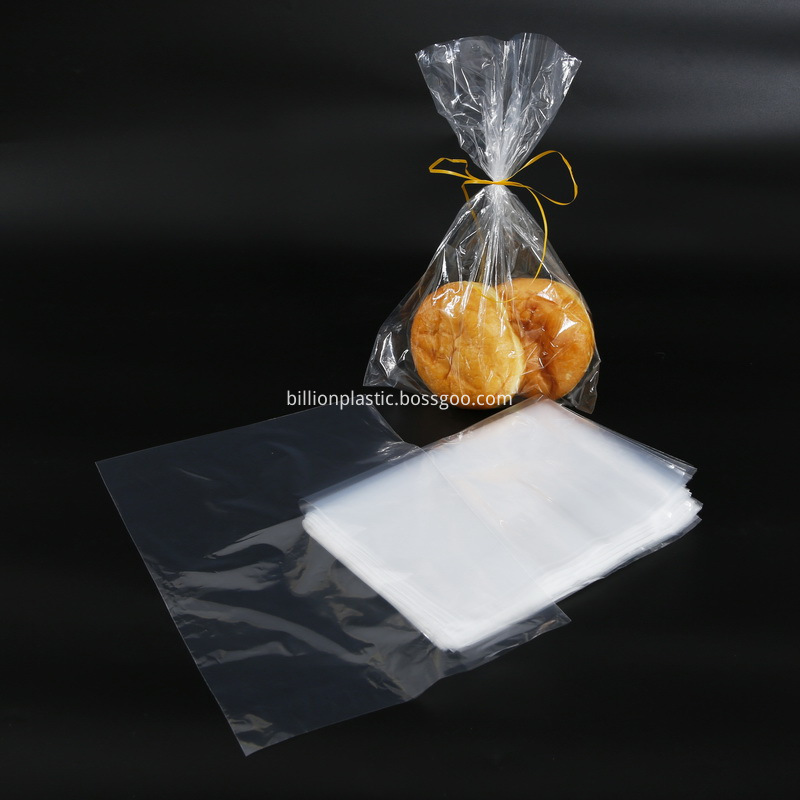
Model NO.: CETM
Shipment Terms: Fob Fort Worth
Function: Test Auto Air Condition Compressors
Compressor Types: All Compressors for Automobile, Vehicle
Variable Speed Motor Controller: 0 to 1750 Rmp
Low Side Monitor: 2.5 Inch 0 to 160 Psi Liquid Filled Gauge
Low Side Monitor Pressure: 0 to 100 Psi Pressure Transducer
High Side Monitor: 2.5 Inch 0 to 300 Psi Liquid Filled Gauge
High Side Monitor Pressure: 0 to 500 Psi Pressure Transducer
Sump Monitor: 2.5 Inch 0 to 160 Psi Liquid Filled Gauge
Sump Monitor Pressure: 0 to 100 Psi Pressure
Trademark: TDS mark or customized
Transport Package: Fumigation Wooden Box
Specification: 24 * 32 * 30 inch
Origin: Made in USA
HS Code: 8484200090
Model NO.: CETM
Shipment Terms: Fob Fort Worth
Function: Test Auto Air Condition Compressors
Compressor Types: All Compressors for Automobile, Vehicle
Variable Speed Motor Controller: 0 to 1750 Rmp
Low Side Monitor: 2.5 Inch 0 to 160 Psi Liquid Filled Gauge
Low Side Monitor Pressure: 0 to 100 Psi Pressure Transducer
High Side Monitor: 2.5 Inch 0 to 300 Psi Liquid Filled Gauge
High Side Monitor Pressure: 0 to 500 Psi Pressure Transducer
Sump Monitor: 2.5 Inch 0 to 160 Psi Liquid Filled Gauge
Sump Monitor Pressure: 0 to 100 Psi Pressure
Trademark: TDS mark or customized
Transport Package: Fumigation Wooden Box
Specification: 24 * 32 * 30 inch
Origin: Made in USA
HS Code: 8484200090